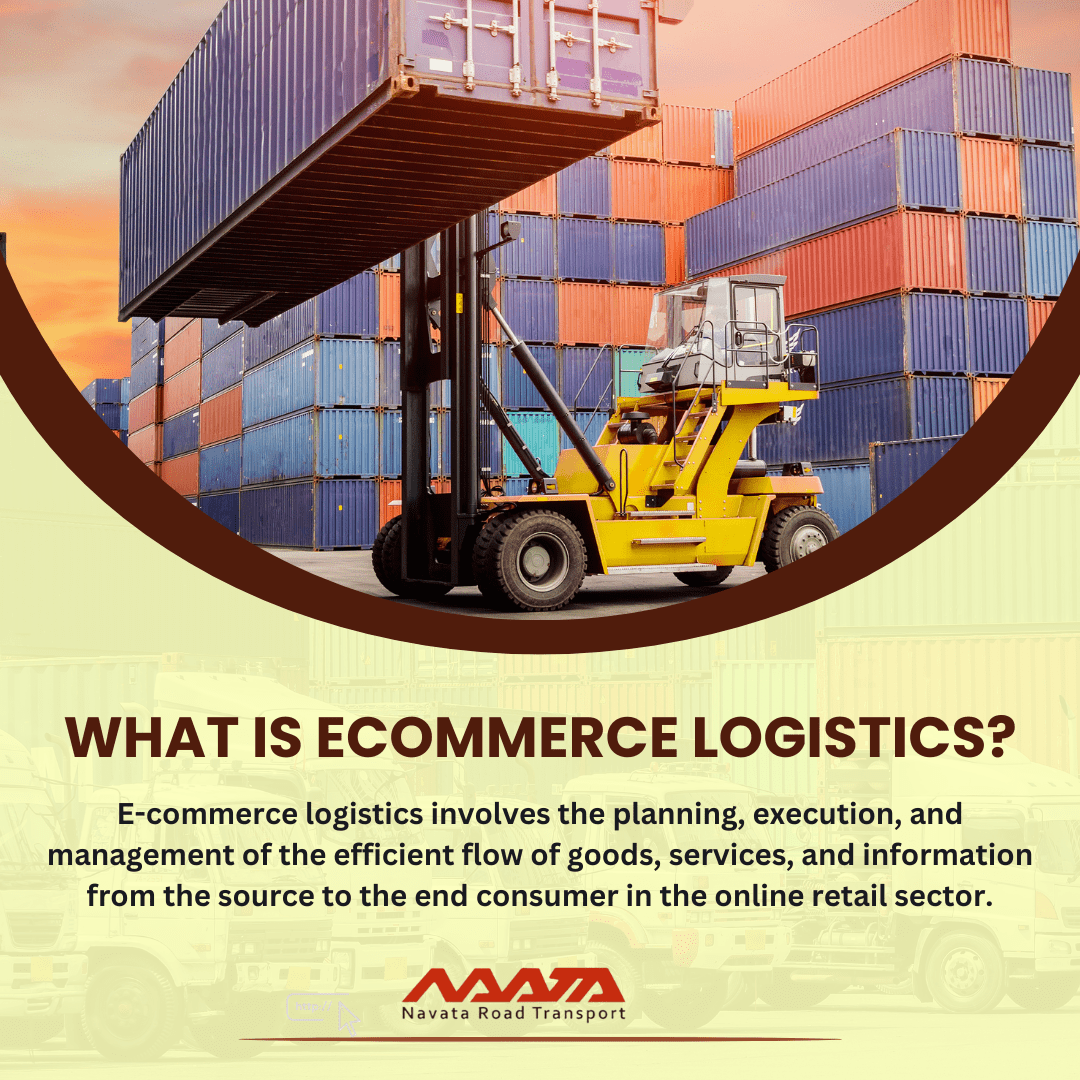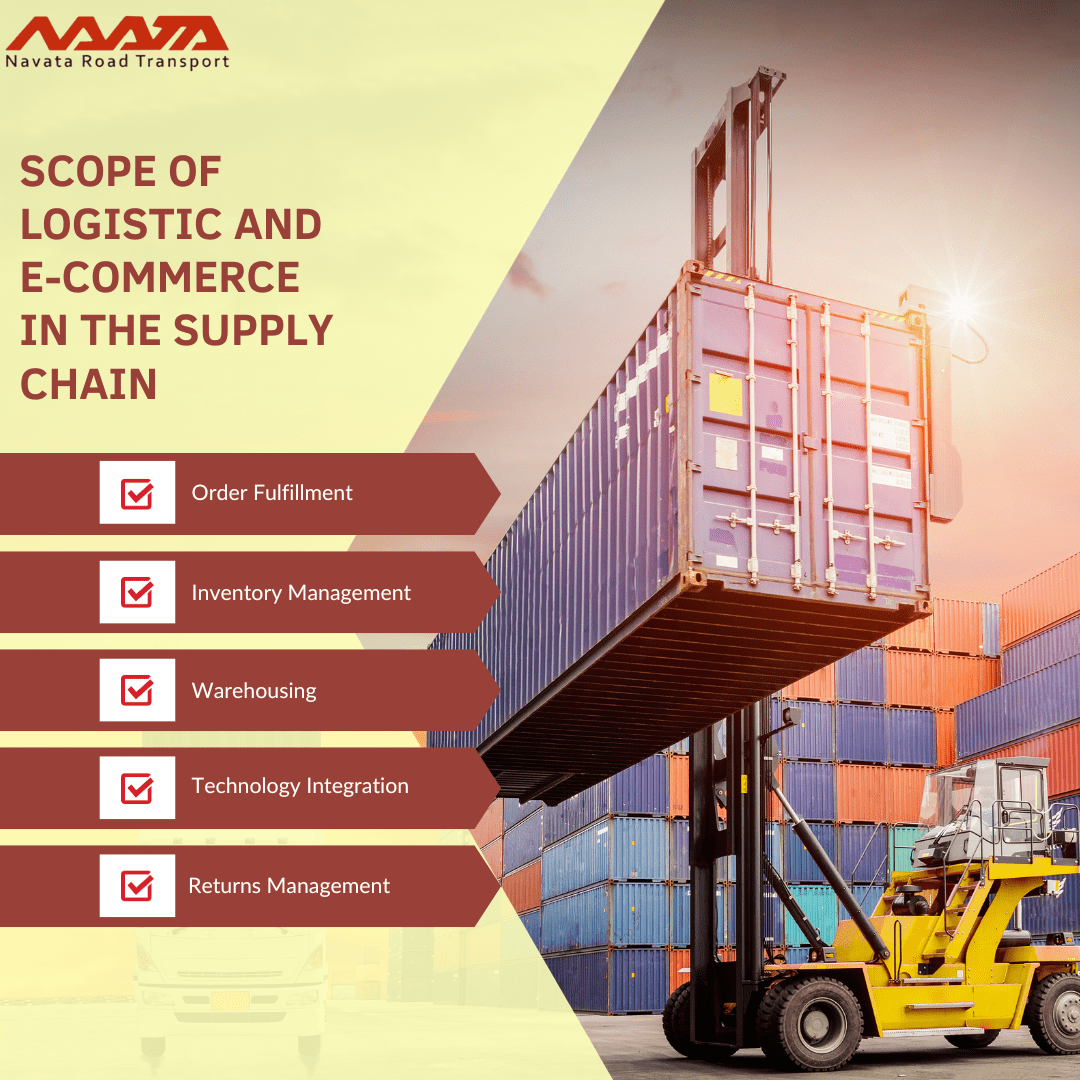Logistic and E-Commerce : Definition, Relation and Impact
Table of Contents
What is Ecommerce Logistics?
In an era where digital connectivity dominates, the e-commerce industry has emerged as a powerhouse of economic activity, transforming the way consumers shop and businesses operate. The convenience of online shopping, coupled with a vast array of products at one’s fingertips, has catapulted e-commerce into a booming sector with unprecedented growth.
E-commerce logistics refers to the specialized processes and activities involved in managing the flow of goods, information, and services from the point of origin to the final consumer in the context of online retail. It encompasses a range of operations designed to ensure the efficient and seamless movement of products through the various stages of the supply chain, ultimately leading to timely and accurate delivery to the end customer.

Scope of Logistic and E-commerce in the Supply Chain
The scope of e-commerce logistics extends across the entire supply chain, playing a pivotal role in shaping the success and sustainability of online businesses. Here’s a breakdown of its scope:
Order Fulfillment
Picking and Packing: Efficiently selecting and preparing products for shipment.
Shipping: Choosing appropriate carriers, managing shipping costs, and ensuring timely deliveries.
Last-Mile Delivery: The final leg of the delivery process, from the distribution center to the customer’s doorstep.
Inventory Management
Stocking: Storing and managing inventory in fulfillment centers or warehouses.
Real-time Tracking: Implementing systems for accurate and real-time tracking of inventory levels.
Warehousing
Storage and Distribution: Warehouses strategically located for optimal distribution and reduced shipping times.
Technology Integration: Utilizing technology for efficient warehouse operations, including automation and robotics.
Technology Integration in E-commerce Logistics
Inventory Management Systems: Tracking and managing inventory levels in real-time.
Order Tracking Systems: Providing customers with visibility into the status and location of their orders.
Transportation Management Systems: Streamlining transportation processes, optimizing routes, and reducing shipping costs.
Returns Management
Efficient Handling: Developing strategies to manage returns seamlessly.
Customer Satisfaction: Using returns as an opportunity to enhance customer satisfaction and trust.

Ecommerce Impact on Logistics Industry
The e-commerce logistics sector is exploding and has a significant influence on the logistics industry these days. E-commerce has had a significant influence on logistics since the expansion of e-commerce has increased customer needs and expectations. Consumers are becoming more particular about the timeliness of delivery according to their preferences.
According to reports, e-influence commerce in the logistics industry is so significant that the worldwide logistics market for e-commerce is predicted to reach $720 billion by 2020.
This growth has compelled organizations like FedEx to be inventive and sophisticated in their services to connect to the global network. Efforts are being made to improve logistics, particularly in the transportation sector.
Shift in Consumer Expectations
Speed of Delivery: E-commerce has given rise to the expectation of faster deliveries. The traditional logistics model, designed for bulk shipments to physical stores, is now adapting to the demand for quick, often next-day, deliveries to individual consumers.
Visibility and Tracking: Online shoppers expect real-time visibility into the status and location of their orders. This necessitates advanced tracking systems and communication channels throughout the supply chain.
Last-Mile Logistics Challenges
Last-Mile Delivery Optimization: The “last mile” of the delivery process, from the distribution center to the customer’s doorstep, is a critical focus. Logistics providers are experimenting with innovative solutions, including drones, autonomous vehicles, and local distribution centers.
Urban Logistics: With the increasing urbanization of populations, logistics companies are developing strategies to navigate complex urban environments efficiently, addressing issues like traffic congestion and limited parking.
Inventory Management and Warehousing Evolution
Dynamic Warehousing: E-commerce’s demand for smaller, more frequent shipments has led to a rethinking of warehouse management. Warehouses are becoming more dynamic, often automated, and strategically located to facilitate faster order fulfillment.
Just-in-Time Inventory: The shift towards just-in-time inventory models is reducing storage costs and minimizing the risk of overstock or stockouts.
Technology Integration and Automation
Advanced Tracking Systems: The integration of technology in logistics has become imperative. Technologies like RFID, IoT (Internet of Things), and AI-powered analytics enhance tracking, visibility, and overall supply chain efficiency.
Automation in Warehousing: Robotics and automation streamline warehouse operations, reducing labor costs, minimizing errors, and accelerating order processing.
Reverse Logistics Growth
Returns Management: E-commerce’s inherent challenge of managing returns is reshaping the logistics landscape. Efficient returns management processes are becoming a key differentiator for e-commerce businesses.
Globalization and Cross-Border Logistics
Global E-commerce: E-commerce has facilitated a global marketplace, increasing the need for efficient cross-border logistics. Logistics providers are adapting to handle the complexities of international shipping and customs procedures.
Environmental Sustainability
Green Logistics: With the increasing awareness of environmental sustainability, logistics companies are exploring eco-friendly options. This includes optimizing routes to reduce emissions, using electric vehicles, and adopting packaging practices with lower environmental impact.
Collaborative Logistics Networks
Partnerships and Collaboration: The complexity of modern e-commerce logistics often requires collaboration among various stakeholders. Logistics providers, e-commerce platforms, and technology companies are forming partnerships to create more integrated and efficient supply chains.
You Might Also Like To Read: What is Logistics for eCommerce and How it Works ?
Ecommerce Logistics Challenges
The exponential growth of the e-commerce industry has brought forth a myriad of opportunities, but it has also presented significant challenges for the logistics sector. As consumer expectations evolve and the volume of online transactions continues to surge, logistics providers face the daunting task of adapting to a landscape that demands speed, precision, and flexibility. Let’s delve into the Ecommerce Logistics Challenges:
Last-Mile Delivery Pressures
Speed and Timeliness: Meeting the expectations of rapid deliveries, often within a day or two, poses a significant challenge. Navigating urban traffic, coordinating multiple deliveries, and ensuring on-time arrivals demand innovative solutions.
Cost Efficiency: Achieving last-mile efficiency while keeping delivery costs in check is an ongoing struggle. Balancing speed and cost-effectiveness is a delicate equation.
Inventory Management Complexity
Dynamic Demand: E-commerce’s nature, characterized by fluctuating demand and seasonal spikes, challenges traditional inventory management systems. Predicting and meeting demand while avoiding overstock or stockouts is a constant challenge.
Product Variety: A diverse range of products often requires customized storage and handling solutions, adding complexity to inventory management.
Returns Management Dilemmas
Volume and Complexity: E-commerce experiences higher return rates compared to traditional retail. Managing the volume and complexity of returns, including restocking, refurbishing, and reselling, is a significant challenge.
Customer Expectations: Efficient and hassle-free returns processes are essential for customer satisfaction. Navigating customer expectations while minimizing the impact on logistics operations requires strategic planning.
Technology Integration Hurdles
System Compatibility: Integrating various technologies such as order management systems, warehouse management systems, and transportation management systems can be challenging. Ensuring seamless communication between these systems is crucial for efficient operations.
Cost of Implementation: Adopting advanced technologies like IoT, RFID, and automation requires a significant initial investment. Balancing the cost of implementation with long-term benefits is a key consideration.
Transportation Challenges
Scalability: Adapting transportation networks to accommodate the scaling demands of e-commerce, especially during peak periods, is a persistent challenge.
Sustainability: Balancing the need for speed with sustainable transportation practices is becoming increasingly important. E-commerce logistics must address environmental concerns and reduce the carbon footprint.
Globalization and Cross-Border Complexities
Customs and Regulations: Navigating diverse international regulations, customs procedures, and varying taxation systems complicates cross-border logistics.
Delivery Timeframes: Maintaining competitive delivery times for cross-border shipments, often subject to longer transit times, challenges the traditional notion of rapid e-commerce deliveries.
Talent and Workforce Issues
Skilled Workforce: The evolving nature of e-commerce logistics demands a skilled workforce capable of managing advanced technologies and adapting to changing industry dynamics.
High Turnover: High turnover rates and labor shortages in the logistics industry can hinder the consistent quality of service.
Security Concerns
Package Security: The risk of theft or damage during transit raises security concerns. Implementing measures to secure packages throughout the supply chain is crucial.
Data Security: The reliance on digital systems for tracking and communication necessitates robust cybersecurity measures to protect sensitive customer and operational data.
Conclusion
In conclusion, e-commerce logistics is a dynamic and critical aspect of online retail that demands careful attention and strategic planning. Businesses that prioritize efficient supply chain management stand to gain a competitive edge in the increasingly competitive world of e-commerce. By understanding the key components, importance, and effective strategies of e-commerce logistics, businesses can navigate the complexities of the digital marketplace and deliver a seamless and satisfying experience to their customers.
Thanks For Reading: Logistic and E-Commerce : Definition, Relation and Impact
Leave a Replay
Challenges In Logistic Challenges In Logistic




